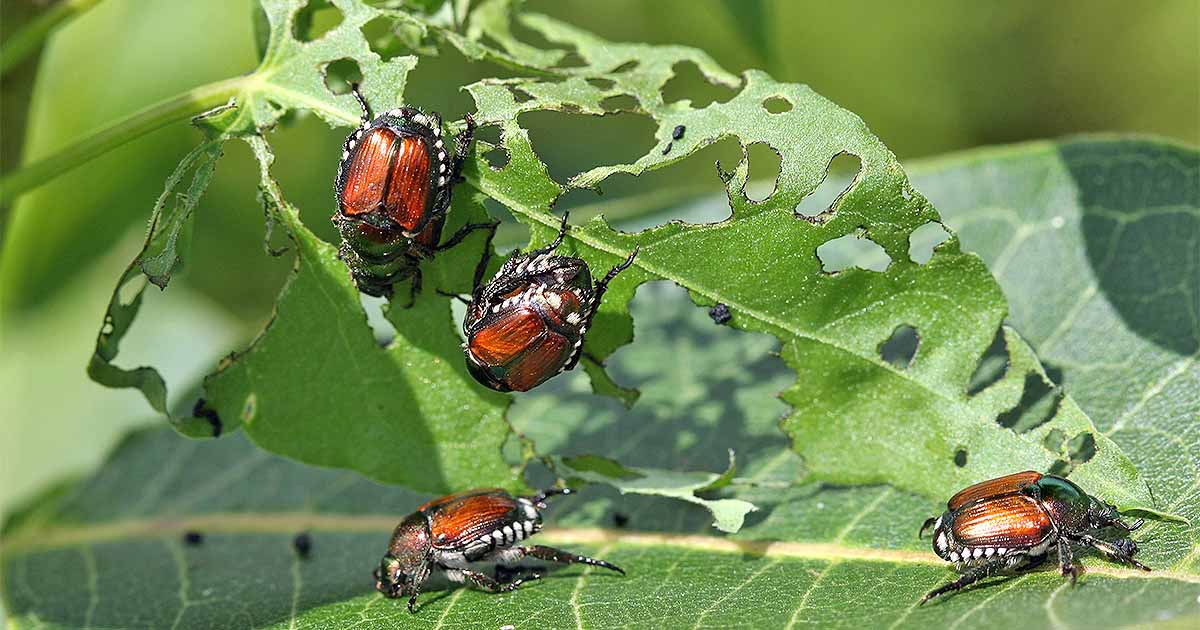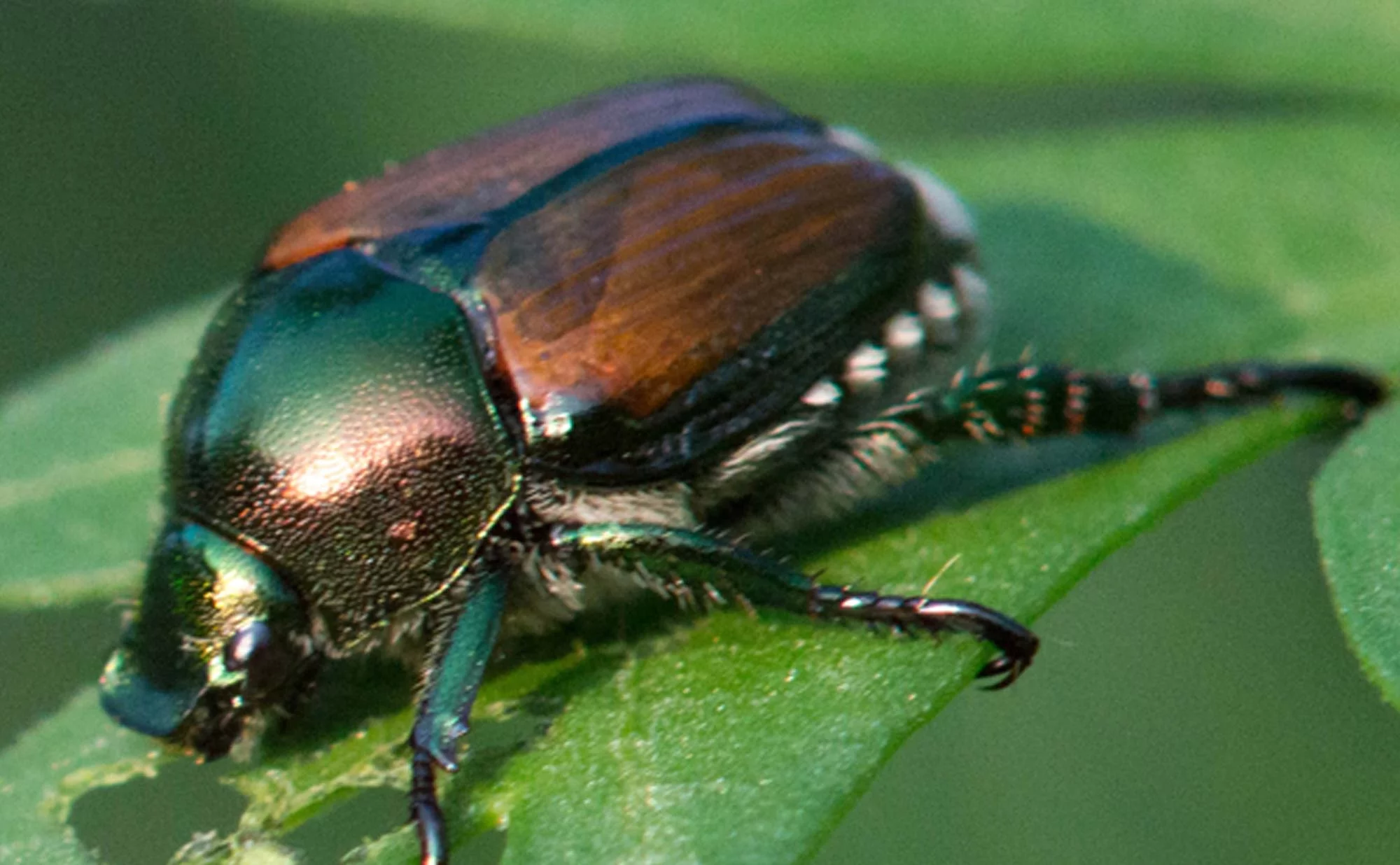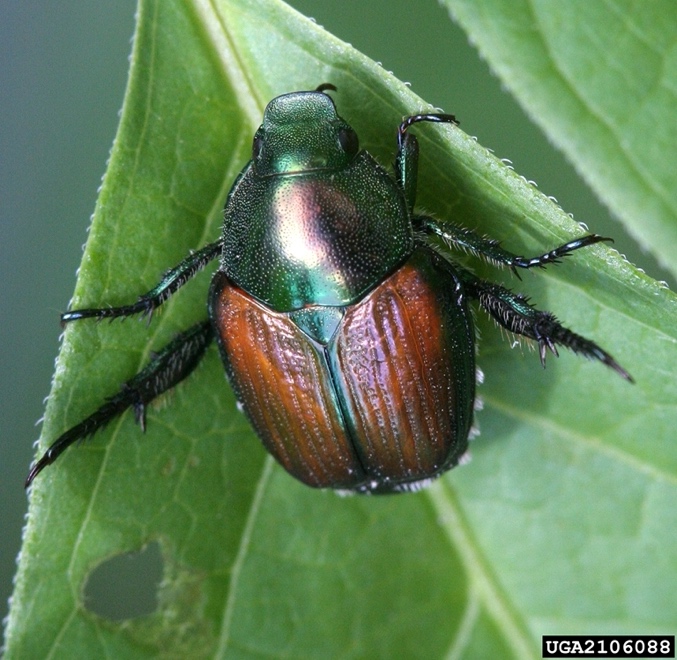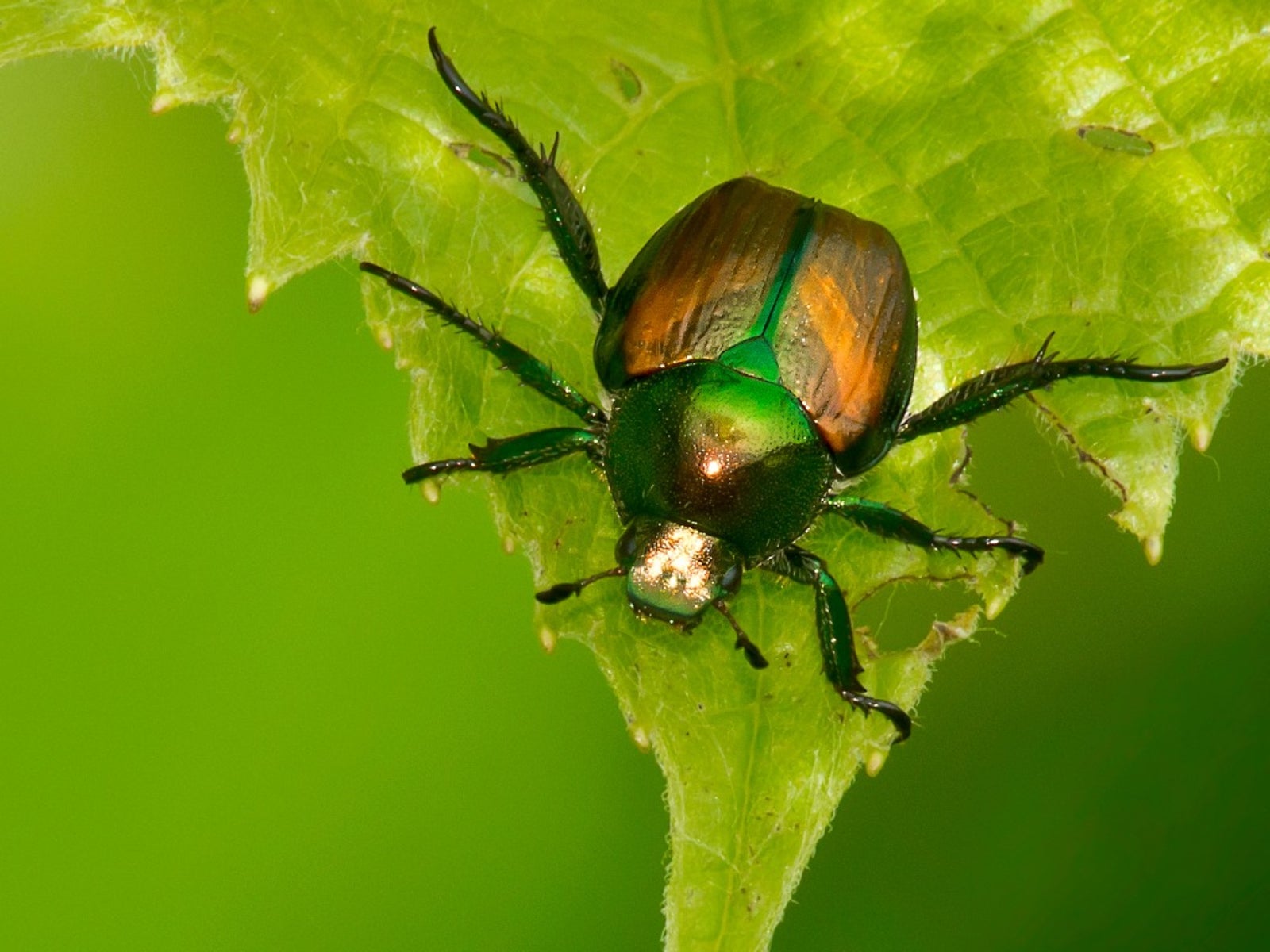japanese beetle life cycle iowa
Observing Japanese beetles feeding on plants is quite common since the adult beetle feeds on about 300 species of trees shrubs ornamental and fruit trees in addition to vegetable crops. Japanese beetles that were present last summer laid eggs in moist soil covered with grasses turfgrass waterways roadsides etc.

How Many Japanese Beetles Will You See This Year Horticulture And Home Pest News
Adrian White is a certified herbalist who co-owns an Iowa organic farm specializing in organically grown produce and gourmet mushrooms.

. Deep in the soil. 2 Ready for a change In late spring the grub forms a pupa 1 to 3 in. Adult female beetles lay eggs in the soil in early June.
During the feeding period females intermittently leave plants burrow about 3 inches into the groundusually into turfand lay a. After this spring feeding period during the third summer of its life cycle the grub. As this insect moves into other areas its important to understand their life cycle the damage they cause and options for managing them.
The life of adult beetles is relatively short under high temperatures and long under low temperatures Fleming 1972. For more on plant selection see Japanese Beetle Food Preferences from Iowa State University. Adult Japanese beetles feed on and damage some field crops ornamental plants shrubs and garden.
May and June beetles are also common in Iowa. Grubs cease feeding in October and overwinter 15 cm below the soil surface Figure 3. Life Cycle Japanese beetles have one generation per year in Iowa Photo 1.
Japanese beetles have a. The egg larva and pupa life cycle stages develop underground and unless soil is removed or dug into these life stages will not be seen. With course help online you pay for academic writing help and we give you a legal service.
Japanese Japanesebeetle larva beetle pupa slightly smaller than the females. The host range of this insect is very large over 300 species of plants. 1 Grubs emerge After wintering deep in the soil grubs hatched the previous summer rise to the surface in late spring to feed on roots.
The Pesky Japanese Beetle. Adult female beetles lay eggs in the soil in early June. Most have a two- to four-year life cycles but some have one generation per year.
Adults emerge from grass in late June and immediately begin to feed on low-lying plants such as roses and shrubs. Females lay eggs in soil that hatch within seven to 14 days and grubs begin feeding on grass roots. HOW TO PREVENT JAPANESE BEETLES.
Disadvantage - is that it only stays in tree for 30 days and timing may be an issue. Japanese beetles are similar to other Junebugs in appearance and 38 inch long and 14 inch wide. Injected into the tree it stays active for only 30 days but packs a punch being called a knockdown insecticide.
Studies with Japanese beetles under captivity have shown variations as wide as nine to 74 days in males and 17 to 105 days in females. Life Cycle Japanese beetles have one generation per year in Iowa Fig. Advantage - Kills the Japanese Beetle more quickly.
Adults begin to emerge in May and feed on foliage through September. The best way to control adult beetles is to make a preemptive strike in the spring well in advance of the adults emerging. What is the life cycle of the Japanese beetle.
JAPANESE BEETLE LIFE CYCLE. Iowa Missouri and Nebraska. Adults eventually move up trees and field crop foliage to feed and mate.
Emergence was gradual through late June and early July with the peak population happening in mid-to-late-July. Adult MayJune beetles feed on a wide variety of tree foliage and are not considered field crop pests. A female beetle lays 40 to 60 eggs during her lifetime.
As soil temperatures warm in the spring the larvae move closer to the soils urface. This product is great for last minute reduction of Japanese Beetle population. The Japanese beetle occurs in all states east of the Mississippi River with sporadic infestations reported in California Iowa Missouri and Nebraska.
They over winter as third in star larvae in the soil below the frost line. Adult Japanese beetles feed on and damage some field crops ornamental plants shrubs and garden plants. Hosts Back to Top.
Life cycle Japanese beetle have one generation per year Figure 2. In Iowa adult beetles emerge in mid-June through July. The Japanese beetle has four life stages.
Japanese beetles have a univoltine life cycle one generation per year. The host range of this insect is very large over 300 species of plants. Adults begin emergence around 1030 degree days.
Here are the stages in the lifecycle of a Japanese beetle. You are most likely to see the adults from late spring through midsummer. That is it takes one year to complete the development and growth from egg to adult and there is only one generation per year.
The Japanese beetle Popillia japonica has an annual life cycle. Life Cycle Injury Native to Japan the Japanese beetle was first introduced into the United States in 1916. Growing degree days accumulated base 50F for Japanese beetle adults in Iowa 1 January-14 June 2015.
The generally accepted range is 30 to 45 days Fleming 1972. The eggs hatch in about 2 weeks and the developing Japanese beetle larvae white grubs feed on organic matter and grass roots. They overwinter deep in the soil and resurface again in spring when soil temperatures rise to feed for another 3 to 4 weeks before emerging as adult Japanese beetles.
Bagworms are caterpillars with a very unusual life-cycle. Japanese Beetle One-half inch adults are shiny metallic green with bronze wing covers with six white hair tufts on each side of their abdomen Life Cycle Management of Japanese Beetle Favorable conditions Adults prefer lighter soil for egg laying First entry into an area is usually near transportation such as railroads or major highways. The head and thorax are shiny metallic green and the.
This is a good time to apply pesticides. Body color can range from chestnut brown to red Fig. Adults are 1 inch in length and oval in shape.

How To Get Rid Of Japanese Beetles Gardener S Path

How To Get Rid Of Japanese Beetles In Your Yard

Schedule My Japanese Beetle Treatment Today Rainbow Treecare
Life Cycle Of The Japanese Beetle Including A Eggs David Cappaert Download Scientific Diagram

Habitat Euroasia Status Not Listed Isn T This Little Tortoise Beetle Cassidinae Absolutely Stunning It Looks Like A Little Tortoise Beetle Beetle Tortoise

Japanese Beetle Control The Good Earth Garden Center

Japanese Beetles The Garden Website Com

Japanese Beetles Emerging In Southern Iowa Integrated Crop Management

Effective Management Remains Elusive For Beetle That Eats Almost Anything

Bolivia S Indigenous Black Scarab Beetles Are Being Smuggled Into Japan And Sold As Pets Scarab Beetle Pets Beetle

Bioluminescent Bugs Predatory Glow Worms Discovered In Rainforest Webecoist Incredible Creatures Glow Worm Species

Japanese Beetle As A Pest Of Field Corn Land Grant Press

Japanese Beetle Soybean Pest Soybean Research Information Network Srin

Japanese Beetles Meadows Farms

Information On Plants That Deter Japanese Beetles And Plants Japanese Beetles Avoid

Japanese Beetles Begin Emergence Integrated Crop Management

No Easy Solution For Japanese Beetles Iowa Public Radio

Japanese Beetle Soybean Pest Soybean Research Information Network Srin
